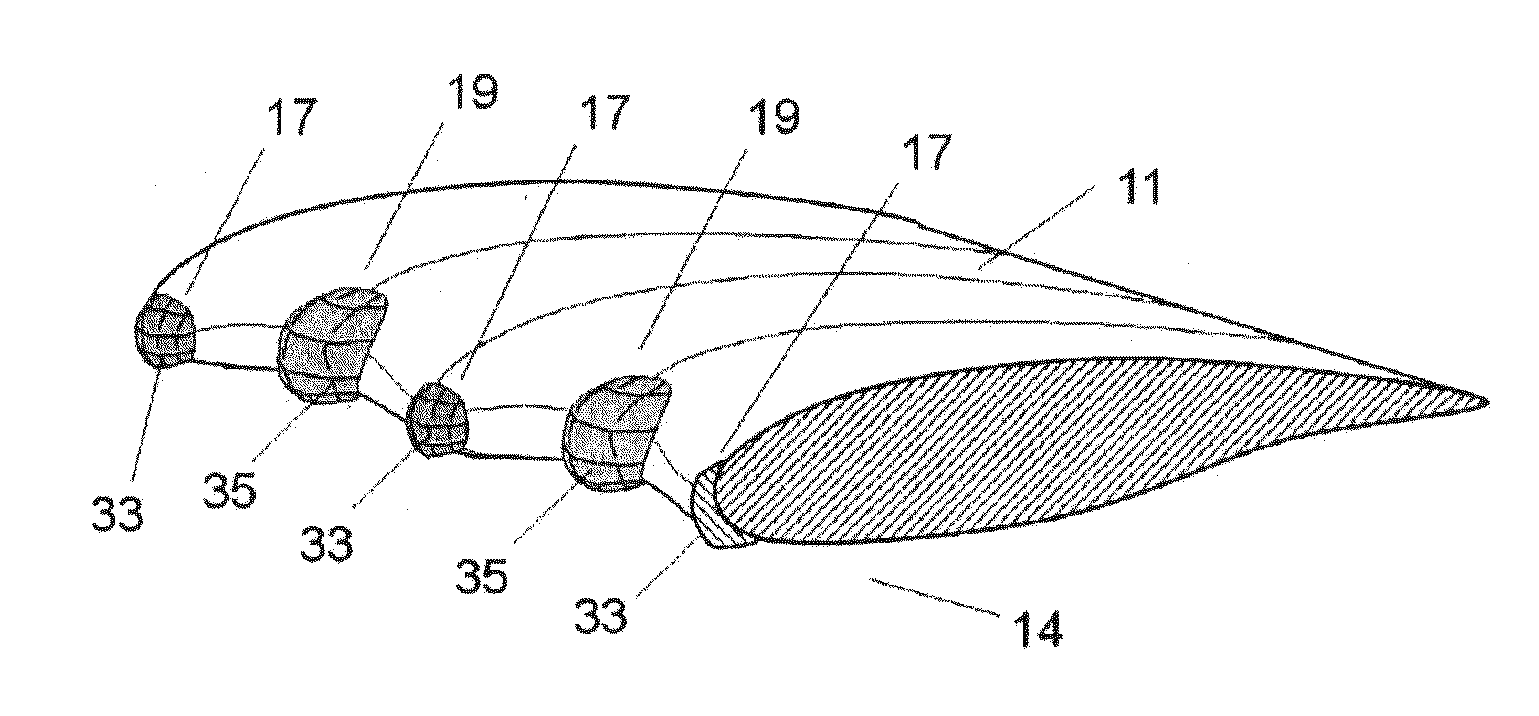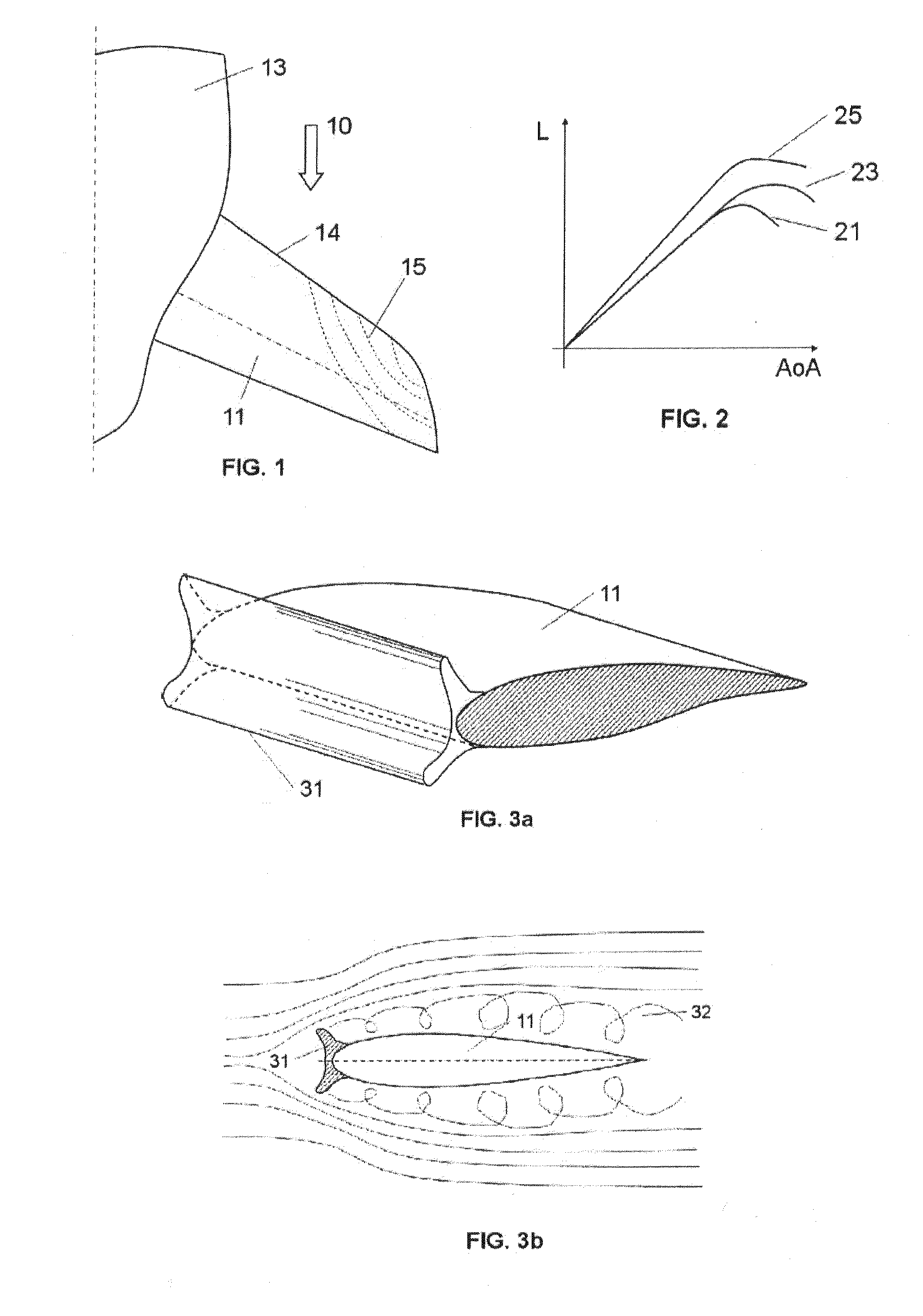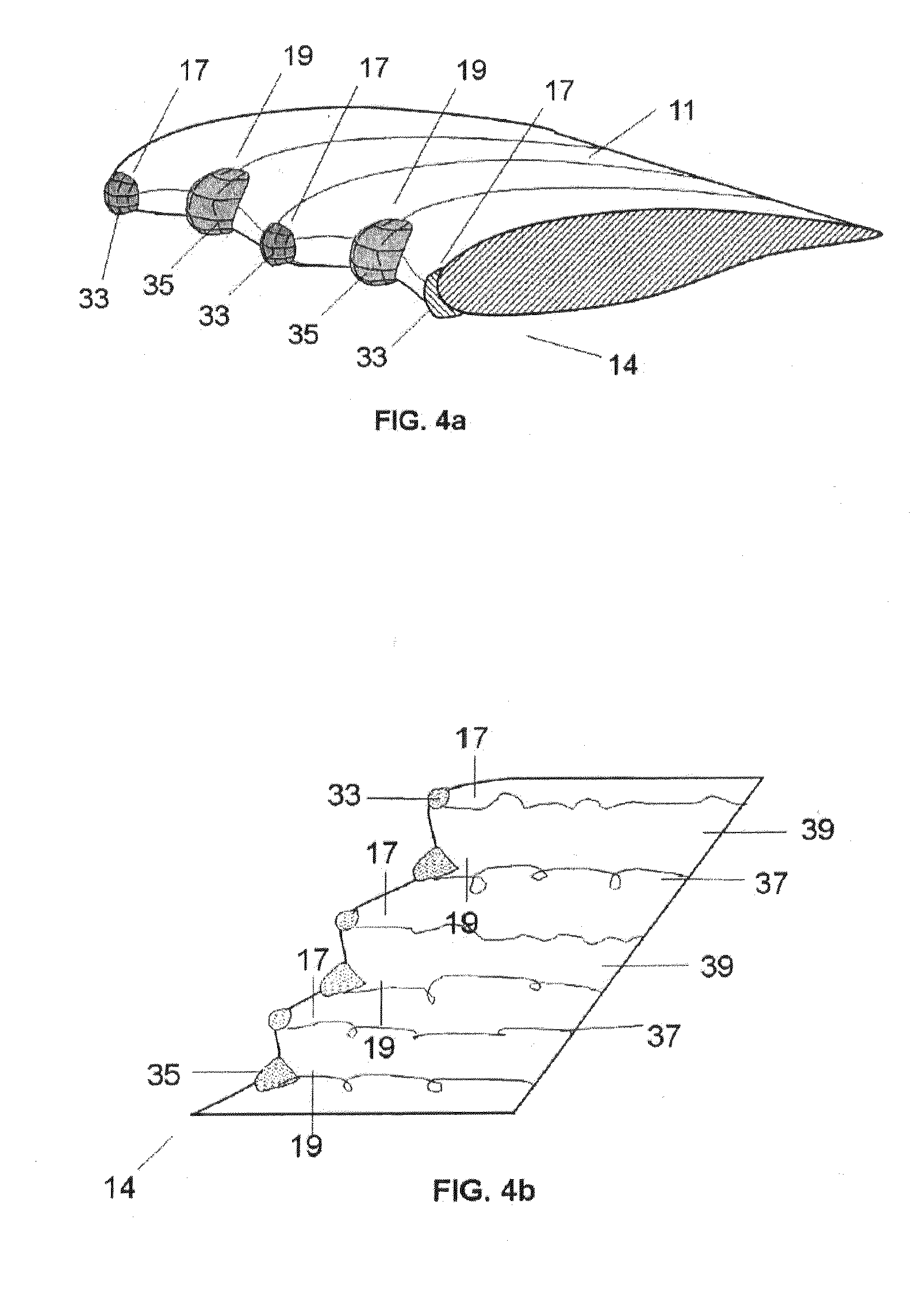Aircraft tail surface with a leading edge section of undulated shape
a technology of leading edge section and aircraft tail surface, which is applied in the direction of aircraft stabilisation, wing shape, drag reduction, etc., can solve the problems of increasing the angle of attack, wing liable to stall, and delay of stall at high angles of attack, so as to improve the aerodynamic performance
- Summary
- Abstract
- Description
- Claims
- Application Information
AI Technical Summary
Benefits of technology
Problems solved by technology
Method used
Image
Examples
Embodiment Construction
[0030]FIG. 1 shows a conventional aircraft horizontal tail plane 11 with a straight leading edge 14 attached to the aircraft fuselage 13 and the region 15 of stall onset. Arrow 10 indicates the flow direction.
[0031]FIG. 2 shows Lift vs. Angle of attack curves 21, 23, 25 for the horizontal tail plane of FIG. 1 in, respectively, a situation with icing on the leading edge of a tail plane without any special device to delay stall in icing conditions, a situation with icing on the leading edge with undulations as per the present invention, and a situation without icing. These curves show clearly that reducing the detrimental effect of ice accretion is a primary driver for delaying stall.
[0032]The loss of maximum lift capability and reduced stall angle with ice accretion is due to, as shown in FIGS. 3a and 3b, the flow separation 32 caused by the ice accretion 31 on the leading edge of the horizontal tail plane 11.
[0033]FIGS. 4a and 4b illustrates the basic idea of the present invention. ...
PUM
 Login to View More
Login to View More Abstract
Description
Claims
Application Information
 Login to View More
Login to View More - R&D
- Intellectual Property
- Life Sciences
- Materials
- Tech Scout
- Unparalleled Data Quality
- Higher Quality Content
- 60% Fewer Hallucinations
Browse by: Latest US Patents, China's latest patents, Technical Efficacy Thesaurus, Application Domain, Technology Topic, Popular Technical Reports.
© 2025 PatSnap. All rights reserved.Legal|Privacy policy|Modern Slavery Act Transparency Statement|Sitemap|About US| Contact US: help@patsnap.com



